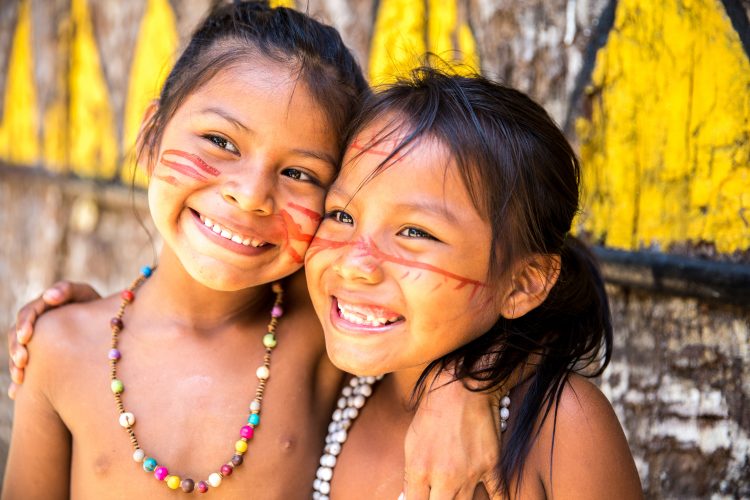Bushmeat can reduce anaemia cases in “vulnerable rural children”
- Like
- Digg
- Del
- Tumblr
- VKontakte
- Buffer
- Love This
- Odnoklassniki
- Meneame
- Blogger
- Amazon
- Yahoo Mail
- Gmail
- AOL
- Newsvine
- HackerNews
- Evernote
- MySpace
- Mail.ru
- Viadeo
- Line
- Comments
- Yummly
- SMS
- Viber
- Telegram
- Subscribe
- Skype
- Facebook Messenger
- Kakao
- LiveJournal
- Yammer
- Edgar
- Fintel
- Mix
- Instapaper
- Copy Link
Posted: 6 April 2022 | New Food | No comments yet
Bushmeat is a controversial food source, but new research suggests that anaemia cases would increase if “vulnerable” children in the Amazon rainforest were denied it.


Depriving children in rural Amazonia of bushmeat could increase anaemia cases
Eating wild animals, known collectively as bushmeat or wildmeat, could reduce anaemia among children living within the Amazon rainforest. That’s according to a new study of more than 1,000 households, which claims that depriving what it calls “vulnerable rural children” of bushmeat could see cases of anaemia rise by around 10 percent.
Health inequalities for people living in tropical forest areas like the Amazon are profound. Researchers behind the study say that two thirds of poor children living in Amazonia forest villages are considered anaemic due to factors such as household food insecurity, suffering from malaria and intestinal parasitic infections, or dietary limitations during the weaning period.
Iron-deficiency is the major cause of anaemia in children – it can hamper physical and cognitive development and affect health and wellbeing into adulthood.
The importance of wildmeat to the health of rainforest peoples has long been discussed, but empirical scientific evidence is scarce. In addition, evaluating wildmeat’s contribution to human health has been given more column inches recently thanks to the risk of zoonotic disease (eg Coronavirus) which has been associated with it.
The international research team, involving academics from Lancaster University in the UK, the University of São Paulo, the Oswaldo Cruz Foundation (FIOCRUZ), and the Federal University of Pará in Brazil, sampled 610 young children from 58 forest communities and four ‘jungle towns’, in Amazonia.
The team travelled between the towns including to Ipixuna, which is 2,800 km by river from the state capital, Manaus. The most remote community was 250 km by boat to the nearest town.
The researchers randomly sampled more than 1,100 households and interviewed caregivers in households with children aged six months to five years-old, asking about their children’s health and wildmeat consumption. They also took blood samples to measure haemoglobin concentration, an indicator of iron levels. The research covered children of different economic and cultural backgrounds living in remote forest communities and towns across central Amazonia.
The results show that consumption of forest animals such as rodents, tapir, wild pigs, deer and birds, is associated with increased haemoglobin levels for the most vulnerable rural children.
This was the case even in central Amazonia where, along with carbohydrate-rich manioc, fish is eaten almost every day in rural areas, providing a substantial source of protein, fat and many micronutrients, but modest amounts of iron. However, researchers found no association between eating wildmeat and improved health for less vulnerable rural children, and children living in towns.
Based on their findings, the researchers predict rates of iron-deficiency anaemia in the most vulnerable rural children could increase by around 10 per cent – more than 3,000 children in Amazonas State alone – if their access to bushmeat is jeopardized by any future restrictions on eating wild animals.
“Our results indicate that wildmeat consumption in the most vulnerable rural households appears to positively influence haemoglobin concentrations among their young children,” said Dr Luke Parry, Senior Lecturer at Lancaster University and Principal Investigator of the study.“Across central Amazonia, our data show that wildmeat consumption may well be protecting thousands of vulnerable rural children in remote areas from iron-deficiency anaemia, which can cause irreparable damage to childhood development and life chances during adulthood.
“There have been calls by some scientists for bans on the bushmeat trade because of overhunting and zoonotic disease transmission, however it is hard to clearly separate subsistence hunting and trade and we show that any such bans would be likely to harm the health of some of the most disadvantaged children on the planet.”
However, bushmeat should not be considered a ‘silver-bullet’ to resolve childhood anaemia, the researchers caution. As forest dwelling poor people face myriad disadvantages, eliminating anaemia, as well as other nutrient deficiencies, requires major investments such as improved access to primary healthcare and high school education – which is important for empowering mothers, sanitation and electricity, they claim.
Related topics
Food Security, Health & Nutrition, Proteins & alternative proteins, Research & development, The consumer
Related organisations
Federal University of Pará, Lancaster University, Oswaldo Cruz Foundation (FIOCRUZ), University of São Paulo









